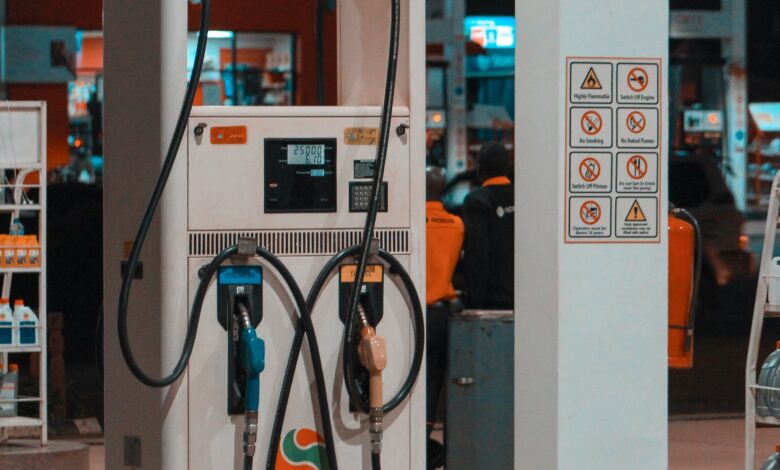Examining the Impact of the UAE’s January 2024 Fuel Price Decrease

The UAE government recently announced a decrease in fuel prices that will take effect in January 2024. According to the announcement, Super 98 petrol will drop from Dhs2.96 per liter to Dhs2.82 per liter. Special 95 petrol will decrease from Dhs2.85 per liter to Dhs2.71 per liter. Diesel prices will also see a reduction, going from Dhs2.77 per liter in December 2023 to Dhs2.64 per liter in January 2024.
This announcement regarding lower fuel prices comes from the UAE’s Ministry of Energy, which first began setting local fuel prices based on global averages in August 2015. Before that shift in policy, petrol prices in the UAE were heavily subsidized by the government to shield consumers from international price fluctuations.
Explanation of the UAE’s Ministry of Energy’s approach to setting fuel prices
As mentioned, since August 2015, the Ministry of Energy in the UAE uses a pricing approach for fuels like petrol, diesel, and kerosene that accounts for global market conditions and prices. This replaced the previous system where the government provided subsidies to keep pump prices low for consumers.
The current monthly fuel price setting takes into account key benchmark averages for refined product prices on global markets. This allows pump prices to broadly align with international pricing trends. However, the government does still provide some protection from extreme price swings when necessary.
This market-driven pricing mechanism gives consumers signals about supply and demand dynamics globally. It also helps ration fuel use more efficiently during periods of tight supply. However, falling global prices can also be passed on to customers, as seen in the newly announced decreases for January 2024.
Decrease in Super 98 fuel prices from January 2023 to January 2024
According to the Ministry of Energy’s announcement, Super 98 petrol will see a significant price drop in January 2024 compared to prices at the start of 2023. The price per liter will fall from Dhs2.78 in January 2023 to Dhs2.82 in January 2024 – a decrease of 16 fils per liter.
Over the course of 2023, Super 98 petrol prices fluctuated each month, reaching a peak of Dhs3.44 per liter in October. The decrease for January 2024 partly offsets some of those prior increases during 2023. However, the latest price is still higher than January 2023’s level.
Decrease in Special 95 and Diesel prices for January 2024
In addition to a sizeable drop in Super 98 petrol, the Ministry of Energy also announced lower prices for Special 95 petrol and Diesel fuel for January 2024.
Special 95 will decline by 14 fils to Dhs2.71 per litre, down from December 2023’s price of Dhs2.85 per litre. This puts it back below the Dhs2.78 per litre drivers paid in January 2023.
For Diesel, the January 2024 price will fall by 13 fils to Dhs2.64 per litre. That reverses some of the prior increase from Dhs2.61 per litre at the start of 2023. So Diesel will become slightly more affordable for commercial and industrial consumers.
Discussion of the potential impact on consumers and businesses
The fuel price decreases set to hit pumps in January 2024 can put some extra cash back in the pockets of everyday drivers in the UAE. For consumers facing rising costs of living, slightly cheaper petrol and diesel gives a small bit of relief.
Lower fuel prices also filter through to businesses in transport, logistics, aviation and tourism. Decreased costs for key inputs like diesel and jet fuel can potentially boost profit margins. However, sectors like oil and gas will see lower realizations per barrel or liter sold locally.
There are also second-order impacts on inflation more broadly if fuel price drops lead to lower prices for hauled goods. Cheaper transport can put downward pressure on costs across supply chains. But the magnitude depends on how much fuel price effects get passed along versus absorbed by industry players.
Comparison of current decreased prices with pre-2015 subsidized prices
The recently announced fuel prices for January 2024 remain substantially higher than the highly subsidized rates that consumers enjoyed at the pumps prior to 2015.
For instance, during the era of government subsidies, petrol prices could be as low as Dhs1.81 per litre. Diesel was even cheaper at under Dhs1.61 per litre before 2015 after accounting for subsidies.
So while drivers will welcome the forthcoming price drops of 14 to 16 fils per litre, pump prices are still elevated by over 1 Dirham per litre compared to the low pre-subsidy baseline. The days of ultra-cheap fuel remain a thing of the past.
Analysis of the implications of the shift from government subsidies to market-based pricing
The 2015 policy shift that triggered higher fuel prices via a transition from subsidies to market-driven pricing had meaningful fiscal and economic implications.
Removing subsidies eased budgetary strains on the government because global energy price spikes no longer required matching subsidy outlays. The policy also discourages overconsumption while encouraging efficiency.
However, consumers and businesses have needed to adjust spending patterns to account for structurally higher fuel costs. This may restrain certain types of discretionary consumption or travel.
Meanwhile, linking pump prices to global benchmarks introduces some volatility into the system when crude markets gyrate. Managing intermittent fuel price spikes comes with its own challenges.
Examination of the potential economic effects of the fuel price decrease
The lowered fuel prices announced for 2024 can provide some modest economic stimulus for the UAE. Consumers will likely redirect a portion of fuel savings toward other forms of spending that could boost sectors like retail, hospitality and entertainment.
Businesses in transport and tourism may also ramp up operations thanks to lower diesel and jet fuel costs. This creates upside for corporate revenues and profits as well as employment in affected industries.
That said, oil producers and fuel retailers will see shrinkage in their local profit pools from the fuel price drops. This countervailing impact mutes the net positive effect on overall GDP growth.
Consideration of the environmental impact of reduced fuel prices on consumption and emissions
While lower pump prices provide some economic lift, they risk being counterproductive environmentally. Cheaper petrol and diesel leads to greater fuel burn volumes as consumers drive more and businesses operate transport fleets more intensively.
This dynamic triggers higher aggregate carbon emissions for the UAE. Without offsetting measures in place, the outcome clashes with national sustainability objectives like the Net Zero by 2050 strategic initiative.
Authorities may need to ramp up eco-friendly transportation policies or incentives
to counteract the emissions impact of declining fuel prices. Examples could include expanded electric vehicle charging infrastructure, bigger rebates on EV purchases, or hiking vehicle registration fees for large gas-guzzling models.
Discussion of how consumers might respond to the price decrease
The fuel price reductions for January 2024 will likely be welcomed by consumers across the UAE. For drivers, the cost savings may be modest on a per-fill-up basis. But over the course of a year of driving, totals can become more substantial.
Some customers may treat the price drop as an opportunity to drive more frequently or over longer distances. For others, the savings gets redirected to other forms of discretionary spending. And for lower-income households, small fuel savings still provide helpful budget relief.
Additionally, apart from personal driving habits, lower petrol and diesel expenses also filter through to consumer goods via transportation and logistics. So there can be secondary lifestyle impacts from falling fuel prices over time.
Analysis of potential market trends and adjustments in response to the new prices
The fuel price shifts coming in 2024 could influence some broader market dynamics over the longer-term horizon. If substantially lower prices persist, this can spur greater automobile ownership rates and higher overall traffic volumes.
Related sectors like automotive sales, insurance, maintenance and road infrastructure may then see upside demand effects. However, if prices later reverse and start rising again, consumer behaviors could subsequently swing back the other way.
There may also be some localized impacts on fuel retailing markets if price differentials open up between emirates or municipalities. This could ignite unofficial arbitrage flows or black market activity that erodes profitability for legitimate fuel sellers.
Conclusion
The UAE’s January 2024 fuel price decrease brings modest but welcome relief on petrol and diesel costs for consumers and businesses. The price drops partly offset earlier increases during 2023 and potentially leaves some extra disposable income in people’s pockets. However, pump prices remain substantially higher than pre-2015 subsidized levels. There are also risks that cheaper fuel stimulates emissions and partially undermines sustainability agendas like Net Zero 2050 without appropriate counter-measures. As global energy markets shift in 2024 and beyond, consumers and policymakers alike will need to continually reassess transportation priorities, incentives and behaviors against economic and environmental backdrops.



